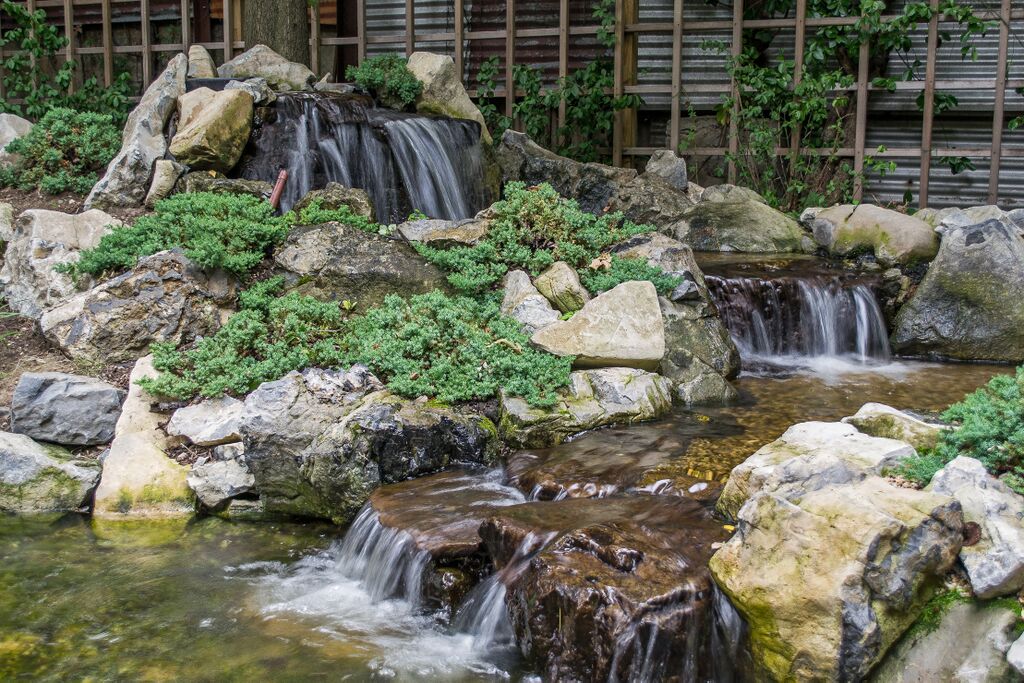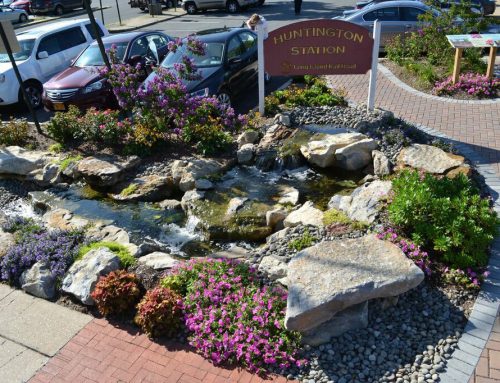Have you ever considered that one way you can save for a rainy day is by saving water from a rainy day? Depending on the municipality that supplies your water and how much water you need for irrigation, etc., capturing rainwater can significantly reduce water bills.
With over 1/2-acre of wooded gardens, these homeowners had a well that operated a sprinkler system. It maintained their vegetable garden along with their entire property’s landscape. After the well stopped working, they asked us to provide another way to irrigate it all without using city water. In addition, they wanted a playground beside a pond, with waterfalls and stream. They hoped captured rainwater would help maintain these as well.
The Rainwater Harvesting System
The system we installed provides two ways to capture all the necessary rainwater. First, water from the roof is collected and sent to an underground 1,000-gallon reservoir. Because the clients also needed a new patio, this presented the ideal opportunity to use “permeable” pavers that collect water underneath what is now a new 1,000-square-foot patio.
Challenges
The home is located in an historic area in central Brooklyn, so all changes to the property and home had to be approved by the local historical society. Also, the property sloped and we needed a series of perforated pipe and bulkhead fittings to get all of the water to flow the correct way. Lastly, the New York City location made for difficult logistics. Excavated materials going out and truck loads of new material coming in was complicated, and we heard many beeping horns.
Results
With the Aquascape RainXchange rainwater harvesting system, 100% of their irrigation water comes from what falls from the roof and onto the patio. At any given time, there is now about 1,000 gallons of water in the reservoir and about an equal amount of water underneath their permeable pavers. In addition, we installed an automatic valve; when the water gets low in their new pond, waterfalls or stream, water in the irrigation system flows in and replenishes them.
The site was pitched the wrong way which made it difficult to get roof water, and water from the permeable pavement, to the 1,000 gallon reservoir. There was also a large pergola with a 30-year-old-grape vine right next to the reservoir that could not be damaged. The peaceful scene of the patio and its surroundings gives no hint of the work involved and the underground systems supporting it all.
Voids between the pavers are filled with crushed stone; when rain passes through the pavers’ joint spaces, it flows down into an underneath layer of bluestone gravel and about an inch of crushed stone which filters the water. Under all that, a liner captures the rainwater, and it is pitched so it pushes water towards the underground reservoir.
Just off the patio, a bubbling rock, which aerates and cleans the water, is connected to the reservoir system and pumps the water through the gravel to clear out impurities. That pump is hooked up to a high-pressure booster pump which operates the irrigation system for the yard.
Aquascape’s systems are a revolutionary design that combines a recirculating decorative water feature — like the bubbling rock we installed here — with a sub-surface rainwater harvesting collection system. The clients just enjoy it as a water feature, while the system filters and aerates the stored water to prevent stagnation.












Leave A Comment
You must be logged in to post a comment.